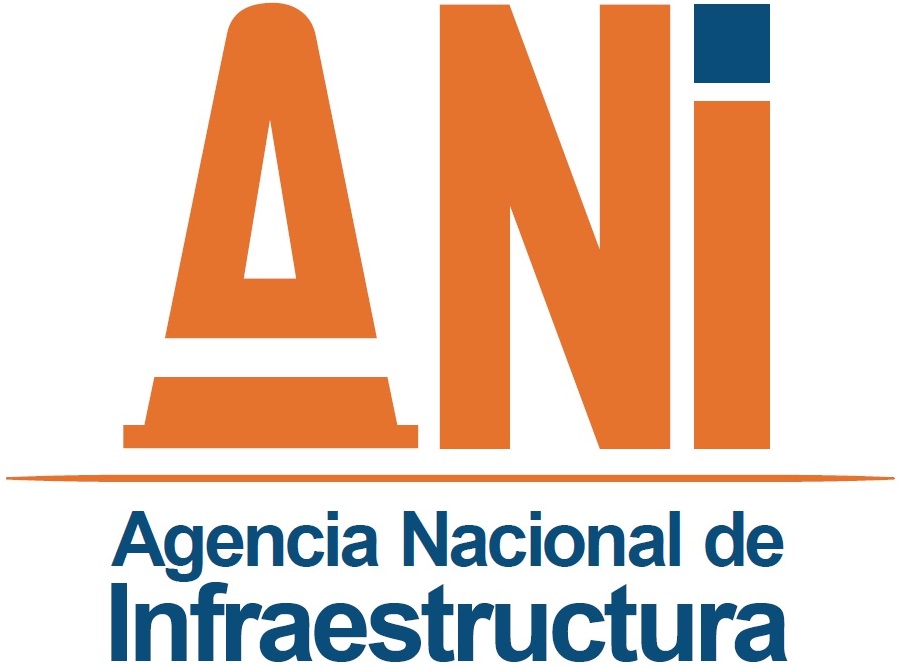PART 609—MANAGING SOILS DATA FOR AGENCY PROGRAMS AND CUSTOMERS
PART 609—MANAGING SOILS DATA FOR AGENCY PROGRAMS AND CUSTOMERS
Managing Soils Data for Agency Programs and Customers
Part 609—MANAGING SOILS DATA FOR AGENCY PROGRAMS AND CUSTOMERS
Table of Contents
PART TITLE PAGE
609.00 Background: The management of soils data 609-1
609.01 Soils data generated during field office assistance 609-1
609.02 Maintenance of soils data in field offices 609-2
Part 609—MANAGING SOILS DATA FOR AGENCY PROGRAMS AND CUSTOMERS
The resource soil scientist has the role of providing soil survey and other soil data to field offices and customers in support of conservation programs. The resource soil scientist is in a position to provide data to fit the local needs of the field office and its customers. The working relationship of the resource soil scientist with the field office fosters an understanding of the need for soils data for locally specific practices and an ability to provide such information. Organizing selected soils data and creating local interpretations for management systems can assist the field offices and other customers in the proper and efficient use of selected data.
609.00 Background: The management of soils data
NASIS (http://soils.usda.gov/technical/nasis/) is the transactional soil database in which soil survey information for map units and pedons is recorded. Resource soil scientists assist in reviewing soil survey data in NASIS for completion and quality so that the State Soil Scientist can authorize the release of that data for use by the Soil Data Mart in such applications as eFOTG (http://www.nrcs.usda.gov/technical/efotg/).
Once the dataset is checked for quality and completion, it moves to the Soil Data Warehouse (SDW). The SDW stores all versions of that soil survey that have been released. In ongoing soil surveys, when portions of the survey are complete, the data can be released to the SDW. Later, when more data is complete or some of the data has been updated, a new version can be released. The SDW will keep each version and stamp a version number and date in the data. The SDW is not accessible to the public.
As soon as a new version of data reaches the SDW, an automatic process is triggered that sends the dataset to the Soil Data Mart at http://soildatamart.nrcs.usda.gov/. Resource soil scientists and other interested parties can subscribe to the Soil Data Mart and will receive notification when there have been updates to specific datasets.
The Soil Data Mart is the public distribution point of soil survey data. It contains all the spatial and tabular information of the most current version for that soil survey. The Soil Data Mart is the official version of the soil survey data. It is the database that is accessed for delivery of the information for eFOTG, the Soil Data Mart Web pages, and Web Soil Survey.
At this time, many programs, including RUSLE2, Customer Service Toolkit, and Manure Management Planner, use static soil survey information. When soil survey information is updated in the Soil Data Mart, it may be necessary to import a new download into these programs so that the most current dataset is maintained. It is important to consider whether an update to the soils database will adversely affect conservation planning efforts during Farm Bill signup periods.
609.01 Soils data generated during field office assistance
When field data are collected in conjunction with conducting a resource inventory for a conservation plan or as part of the assistance provided for conservation practice design and implementation, these data should be entered into Pedon PC. This process allows the data to be used for the specific plan and also allows the data to be
uploaded to NASIS. If the resource soil scientist is skilled in NASIS and NASIS report writing, this function can be used to generate the conservation plan report. At a minimum, the data can be stored as point data. If the history of land use and management also is captured, the combined information provides a valuable dataset that adds to the understanding of use-dependent soil properties. The resource soil scientist, working with the planner and cooperator, is in an ideal position to obtain information on past use and management. This information is essential to any work involving dynamic soil properties. Additionally, where the resource soil scientist is working on a plan within the boundaries of an MLRA soil survey project, any samples collected for Kellogg Soil Survey Laboratory analysis (for example, for dynamic soil properties) can augment the soil survey effort. The resource soil scientist should work in concert with the MLRA Soil Survey Leader on sampling plans and projects.
Where soil profile descriptions are obtained to verify the presence of the default dominant soil phase of the map unit and it is found that the soil present is either another named soil in the map unit or soil survey area (an inclusion), the appropriate data for that soil series and phase should be provided to the conservation planner. Where the soil is unnamed in that soil survey area but fits within the range of characteristics of an existing series, obtain the official data for that series and phase for use in the plan and document the rationale for the plan. Where the soil is unnamed and no series exists, determine the property needs for the plan and determine a soil series that is similar in the required properties. These data should be provided to the planner. The resource soil scientist should also provide documentation and a copy of all findings for NASIS and the State Soil Scientist.
Soils data obtained for planning purposes at sites that do not have an ongoing initial or update soil survey project should not be uploaded to the SDW but should be retained in NASIS for future survey efforts. Resource soil scientists should document their findings in the National Conservation Planning Database in the conservation assistance notes to capture the determinations, alternatives, and decisions discussed during the planning process. Providing a summary of the soils investigations will help planners develop future plans as they assist landowners and land managers.
An important point is that any descriptions and data collected should have multiple applications and be effectively captured for future use.
609.02 Maintenance of soils data in field offices
The resource soil scientist is responsible for ensuring that current soil survey information is available for field offices within the relevant geographic areas. This information includes the spatial and tabular soil data located in the FOTG and on local servers. The resource soil scientist is also responsible for ensuring that all field offices have the knowledge to access the soils information and that they understand the wealth of information that can be included in the conservation plan.
On an ongoing basis, the resource soil scientist is in a good position to assess the integrity of the soil data and provide feedback to the State Office and MO Soil Data Quality Specialists on data edits and update needs.
(430-VI-TSSH, 2010)
i
Tags: 609—managing soils, part 609—managing, soils, 609—managing, customers, programs, agency
- Š T A T Ú T MIESTNEJ ĽUDOVEJ KNIŽNICE
- Francés (segunda Lengua Extranjera) mot de Passe 1º Bachillerato
- DIVISION OF MEDICAL SERVICES A CHMS REQUEST FOR PRIOR
- UNIVERSIDAD TECNOLÓGICA SANTA CATARINA REGLAMENTO DE BIBLIOTECA DE
- D CON NÚMERO DE COLEGIADO NOMBRADO
- CAPITAL & COAST DISTRICT HEALTH BOARD – COMMUNITY AND
- WASTE MANAGEMENT DESK GUIDE PREPARED BY STANLEY ISMART CHIEF
- WORDART 1 1 EN UNA EVALUACIÓN PRÁCTICA SE LE
- ENSKILT AVLOPP ANSÖKAN ANSÖKAN OM TILLSTÅND FÖR ENSKILT
- BADAN KOORDINASI PENANAMAN MODAL SIARAN PERS BKPM MAJUKAN JAM
- OPGAVE 95 A UDSAGN RIGTIGT FORKERT 1 EN
- ТАБЛИЦА ОЦЕНКИ ПРЕЗЕНТАЦИЙ ПО КОНКУРСУ КАФЕДРЫ КОНСТИТУЦИОННОГО И МУНИЦИПАЛЬНОГО
- STUDENTS WITH DISABILITIES AND WIDENING PARTICIPATION GARY TAYLOR LIAM
- PERCHÉ IN ITALIA C’È L’ORA DI RELIGIONE CATTOLICA NELLE
- REVIJA ZAPIK … … JE NAMENJENA PREDVSEM DIJAKOM IN
- SUS MAJESTADES LOS REYES MAGOS DE ORIENTE HACEN ENTREGA
- SENIOR PHASE LEARNING PROGRAMME THE RELATIONSHIP BETWEEN MEMORY AND
- POWERPLUSWATERMARKOBJECT357831064 CAPSTONE SCIENCE UNIT 6 HUMAN ACTIVITY & ENERGY
- FURTHER EDUCATION FUND COURSES COVERED AND NOT COVERED BY
- ECCE LIBRIS JÍZDA SPECIÁLNÍHO VLAKU KNIHOVNICKÉHO A SPISOVATELSKÉHO DNE
- MUNICIPIO DE HACARÍ NOMBRE COMPLETO HACARÍ FUNDACIÓN AGOSTO 2
- REFLEXIONES Y PROPUESTAS SOBRE LA POLÍTICA FARMACÉUTICA FEDERACIÓN DE
- 27 ABSTRAK EVALUASI PENETAPAN HARGA POKOK PRODUKSI CRABMEAT (STUDI
- Mss16309 Mssjeva Nagrada za Diplomska Dela s Področja Mladih
- DIGITALTV OG INTERNETT FRA CANAL DIGITAL TIL BEBOERNE BAKGRUNN
- FÍSICA Y QUÍMICA – 4º ESO – EVEREST PRIMER
- SECUENCIA PASO A PASO DE LA INSTALACIÓN DE XERXESMETALIB
- SUNSHINE CORNERS A NONPROFIT CHILD CARE CENTER CARING FOR
- GROUP 6 PROMOCIÓN DE LA COOPERACIÓN E INTEGRACIÓN DEL
- 3 TRICKS TO AVOID MISSING FONT STYLES IN POWERPOINT
PLANNING AN ACCESSIBLE MEETING A MEETING SPACE SHOULD BE
 POWERPLUSWATERMARKOBJECT1405033 CLUB MILITAR AFILIACIÓN DE SOCIOS Y AUTORIZACIÓN DE
POWERPLUSWATERMARKOBJECT1405033 CLUB MILITAR AFILIACIÓN DE SOCIOS Y AUTORIZACIÓN DEFONTS D’ENERGIA TIPUS D’ENERGIA FORMES D’ENERGIA RENOVABLES SOL AIGUA
WORDEN GRAVITY METERS A GENERAL OVERVIEW THE WORDEN
 VÁROSUNK TÖRTÉNETE AZ ELSŐ HETI FELADAT AMELY KÉT RÉSZBŐL
VÁROSUNK TÖRTÉNETE AZ ELSŐ HETI FELADAT AMELY KÉT RÉSZBŐL FERT PA NT 7 12 VALOR DEL
FERT PA NT 7 12 VALOR DEL SISTEMA INTEGRADO DE GESTIÓN CÓDIGO GCSPF182 PROCESO EVALUACIÓN Y
SISTEMA INTEGRADO DE GESTIÓN CÓDIGO GCSPF182 PROCESO EVALUACIÓN Y ANNEX 2 TIMETABLE FOR IMPLEMENTING THE HKMA’S PACKAGE OF
ANNEX 2 TIMETABLE FOR IMPLEMENTING THE HKMA’S PACKAGE OFVLADA REPUBLIKE HRVATSKE 666 NA TEMELJU ČLANKA 6
PROVINCIA DEL CHACO MINISTERIO DE ECONOMIA INDUSTRIA Y EMPLEO
GUÍAS DE LECTURA 2010 ANTROPOLOGÍA SOCIAL Y CULTURAL
 OBJECTIVES OF THE MEETING THE ECCO ANNUAL MEETINGS AIM
OBJECTIVES OF THE MEETING THE ECCO ANNUAL MEETINGS AIM NEW PATIENT QUESTIONNAIRE WELCOME TO PATHFIELDS MEDICAL GROUP THE
NEW PATIENT QUESTIONNAIRE WELCOME TO PATHFIELDS MEDICAL GROUP THEPRAGMATICS NAMA MATA KULIAH PRAGMATICS NOMOR KODE
 LA LENGUA DE LAS MARIPOSAS ACTIVIDADES ACTIVIDAD 1
LA LENGUA DE LAS MARIPOSAS ACTIVIDADES ACTIVIDAD 1 FREEDOM OF INFORMATION ACT 2000 (FOI ACT) – STATUES
 3 TEGEN 3 TEGEN 3 TEGEN 3 TEGEN 3
3 TEGEN 3 TEGEN 3 TEGEN 3 TEGEN 3TC KIRIKKALE ÜNİVERSİTESİ SOSYAL BİLİMLER ENSTİTÜSÜ LİSANSÜSTÜ TEZ YAZIM
LECTURE NOTE 1 FOR “COMPUTER PROGRAMMING” INSTRUCTOR PANGFENG LIU
 TINYTALK THE UK’S FAVOURITE BABY SIGNING CLASSES BABY SIGNING
TINYTALK THE UK’S FAVOURITE BABY SIGNING CLASSES BABY SIGNING